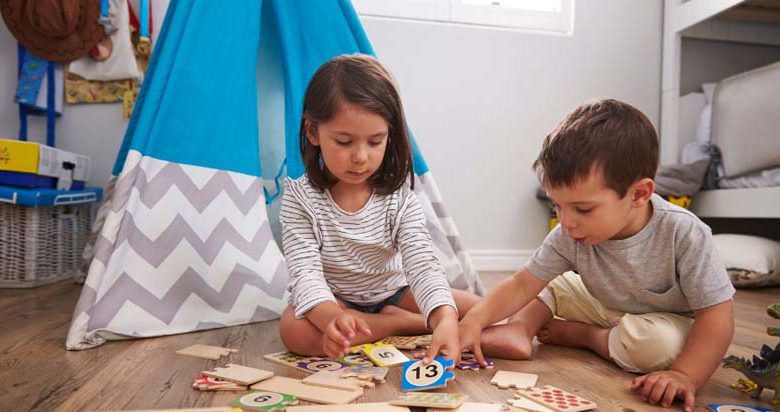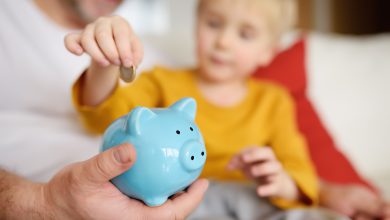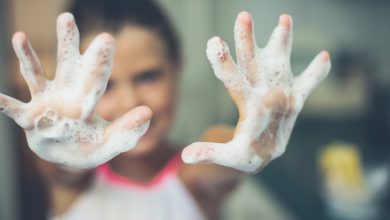What Is Social Emotional Learning?

What Is Social Emotional Learning?
Be honest: Sometimes, your kids’ schoolwork makes you feel dumb.
If it isn’t the unreasonably hard math problems, it’s the realization that you still can’t spell or that your artistic talent passes for an elementary schooler’s.
So if your child comes home from preschool or kindergarten with information on something called SEL or EI, you may feel a little like this …
SEL … EI … so many acronyms! What do they (and the words they represent) mean???
According to Yale Medicine, emotional intelligence (EI) is “the ability to identify and manage your emotions and the emotions of others.” Social emotional learning (SEL) is “the process in which children acquire emotional intelligence, develop empathy for others, and learn problem-solving skills.”
In short, if we’re looking for higher EI in our kids, we get there using SEL.
SEL can be a topic that’s formally “taught” in schools or informally woven throughout the day. Regardless, the goal for teachers is the same — help kids better understand what’s going on as it relates to their emotions so they aren’t harmful to themselves or others down the road.
The 5 Core Parts of SEL
Like all good curriculum, SEL is broken down into five key parts that educators ask students to be aware of.
- Self-Awareness – What are my emotions, thoughts, values, and experiences? How do they influence my actions?
- Self-Management – How well can I regulate and control my emotions, thoughts, and behaviors?
- Responsible Decision Making – Can I make positive and constructive choices by considering the consequences of my actions, understanding my strengths and limitations, and knowing when to ask for help?
- Social Awareness – Can I empathize with others, look at situations from others’ perspectives, be aware of other diverse individuals and groups, and treat others fairly?
- Relationship Skills – Can I listen well, communicate effectively, understand appropriate and inappropriate social behaviors, and compromise, all with the goal of creating healthy, mutually rewarding relationships?
Why Does Social Emotional Learning Matter?
So what’s they pay off? Why should educators pay so much attention to SEL? Well, according to some recent research, there are plenty of reasons to support SEL.
- Students were 42% less likely to say they were involved in physical aggression.
- There was 20% less bullying by students with disabilities.
- For each $1 invested in social-emotional learning, there was $11 returned by that investment.
- On average, there was a 5-12% decrease in school dropout rates associated with SEL.
- Academic achievement increased by 13% with SEL.
- Nearly 80% of employers say SEL skills are the most important qualities for job success.
Also, emotional intelligence is simply a valuable thing to have in this day and age. “One of the things we say is that when everything is calm and relaxing, life is good, and there are no real problems—no one really thinks about emotional intelligence,” said Dr. Marc Brackett, founding director of the Yale Center for Emotional Intelligence and a professor in the Child Study Center. “But when the sand is kicked in your face — like it feels right now — then people start taking emotional intelligence seriously … Everyone is looking for strategies.”
SEL helps provide the strategies kids need to get through anxious times. It may be the only opportunity they have to better understand what’s going on inside their own minds.
Incorporating SEL at Home
Depending on where you live, SEL may or may not be a focus of the curriculum your child is taught at school. If that’s the case, here are some ways you can start incorporating SEL at home with your kids.
- Just check in. Remembering to ask your kids how and what they are feeling is a simple way to develop social-emotional skills. Make sure you are giving them your full attention or are engaged in an activity where you can still engage in conversation. (Think washing the dishes or picking up toys.)
- Read! Books provide a great opportunity to practice social awareness. Pausing while you read to ask what different characters are feeling or how their experiences are shaping their actions is a great way to get your child thinking about other people.
- Get them writing or drawing. Both journaling and being artistic are great ways for kids to practice self-reflection. What do their feelings look like? What words can they use to describe how they feel?
As you work with your kids on increasing their emotional intelligence, we hope you personally benefit from it, too! Even adults could use the reminder to step back, identify their emotions, and think about how they treat and react to others. That’s the ultimate goal of SEL — creating a world where people are aware of themselves and others.
Check out some of our additional information on social emotional development and the roll early education environments play, check out our resources below or visit littlesunshine.com/blog/.
“Scary” Emotions: Teaching Kids How To Engage With Three Big Feelings
Why Is Childhood Brain Development So Important?
How Little Sunshine’s Playhouse® Promotes Social Skills for Preschoolers
Importance of Early Childhood Education





